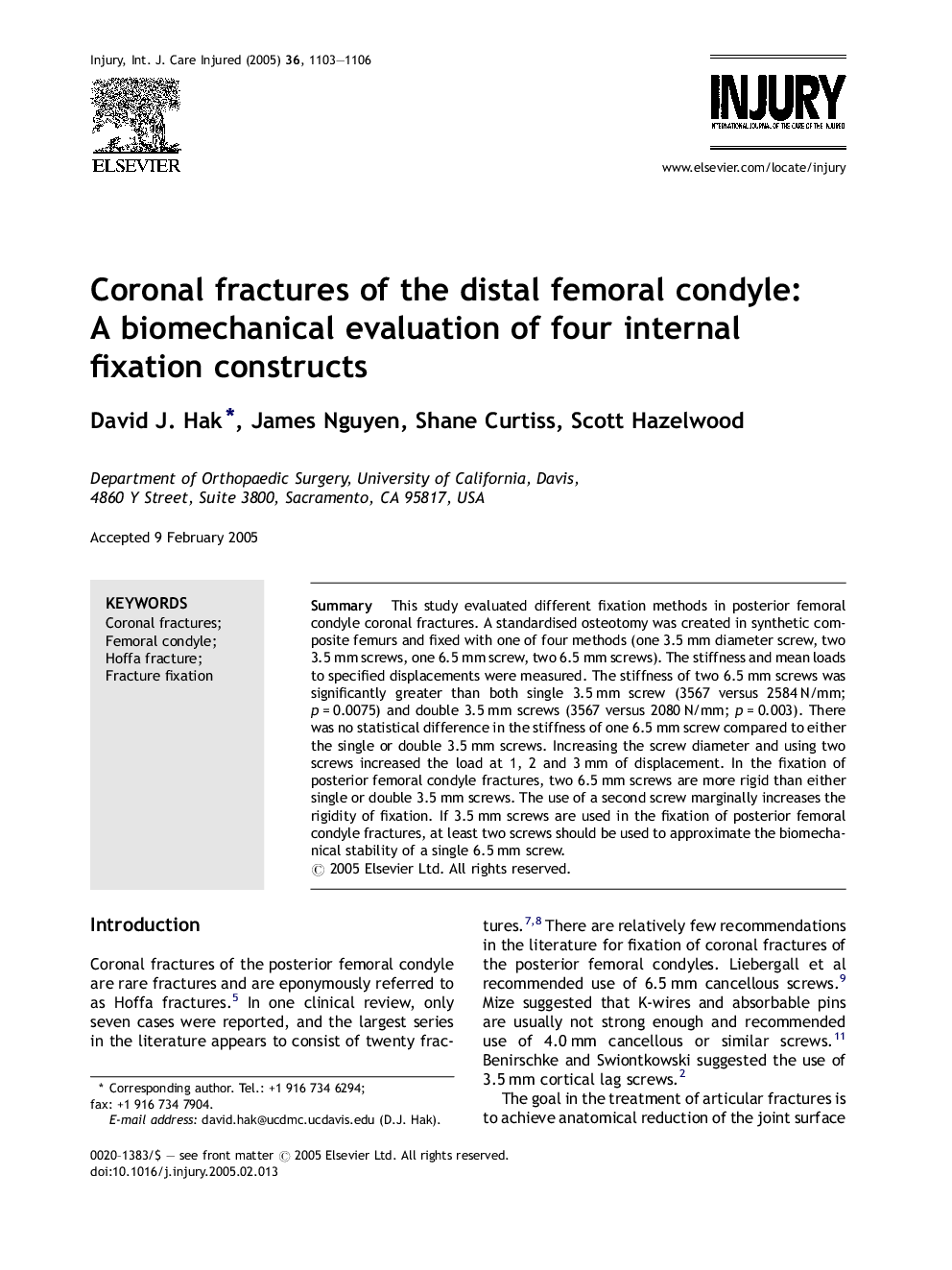| Article ID | Journal | Published Year | Pages | File Type |
|---|---|---|---|---|
| 9234044 | Injury | 2005 | 4 Pages |
Abstract
This study evaluated different fixation methods in posterior femoral condyle coronal fractures. A standardised osteotomy was created in synthetic composite femurs and fixed with one of four methods (one 3.5 mm diameter screw, two 3.5 mm screws, one 6.5 mm screw, two 6.5 mm screws). The stiffness and mean loads to specified displacements were measured. The stiffness of two 6.5 mm screws was significantly greater than both single 3.5 mm screw (3567 versus 2584 N/mm; p = 0.0075) and double 3.5 mm screws (3567 versus 2080 N/mm; p = 0.003). There was no statistical difference in the stiffness of one 6.5 mm screw compared to either the single or double 3.5 mm screws. Increasing the screw diameter and using two screws increased the load at 1, 2 and 3 mm of displacement. In the fixation of posterior femoral condyle fractures, two 6.5 mm screws are more rigid than either single or double 3.5 mm screws. The use of a second screw marginally increases the rigidity of fixation. If 3.5 mm screws are used in the fixation of posterior femoral condyle fractures, at least two screws should be used to approximate the biomechanical stability of a single 6.5 mm screw.
Related Topics
Health Sciences
Medicine and Dentistry
Emergency Medicine
Authors
David J. Hak, James Nguyen, Shane Curtiss, Scott Hazelwood,
